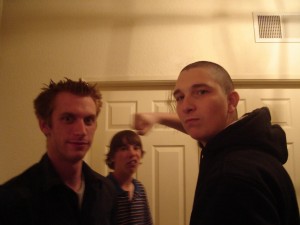If you can’t solve it, it’s not a problem–it’s reality. — Barbara Colorose
Do not pray for easy lives. Pray to be stronger men! Do not pray for tasks equal to your powers. Pray for power equal to your tasks. — Phillips Brooks
You really need to pick a problem. It’s not optional.
Better yet, have a series of problems in mind. Because, really, problems are what make a story.
Here are a few problem types to brainstorm:
The opening problem. What is your MC working on when the story opens? S/he shouldn’t be standing around doing nothing until the villain acts, because then the villain gets to be all active, aka way cooler.
- The first big surprise. aka first plot point. SOMETHING comes along and slaps the MC upside the head so s/he has to make a big choice. This is what spins him or her off into the story idea: that exciting idea that made you want to write the book.
- The problem of what the MC is going to do with problem #1. Star Wars squished problem #1 by charbaking Luke’s reason to stay home (the people who raised him), but there are other options as well. Combining goals is one of them. Another tension-building option is to have old goals and new goals in conflict, and having to choose between two goods.
- The Problem that will have to be solved before the end.
One of my favorite “formulas” for a story (a way of defining is this a story?) is to look for the PPP&O. Does it have:
- Place
- Person
- Problem
- Outcome.
In short-short stories and folktales a formula like this is particularly useful in distinguishing between a true story and a simple anecdote. Take for example this “reverse story” from Elizabeth Marie Pope’s Perilous Gard (One of my all-time favorite novels. There’s a free tip: be able to name your favorite novels and delineate what makes them favorites. That will help you with your like-lists, too.).
“What happened while I was away, Tom?”
“The dog died, Master.”
“How did the dog die, Tom?”
“When the house burned down, Master.”
“How did the house burn down, Tom?”
“One of the candles at your wife’s funeral, Master.”
Definitely a startling and memorable exchange, but it lacks half the elements necessary to be an actual story.
It is not enough to shovel misery on a protagonist. Pain, while important in real life, does not constitute a story-sized problem until it forces the Character(s) to ACT. (If they won’t or can’t act, why are we reading about them?!)
That’s the importance of the opening quote. What makes a good problem is one that can be solved. Super-bonus-awesomeness if the solution is original and unanticipated by the reader.
To summarize, You need a problem. Stories are made of problems. These can be internal, external, personified, impersonal. The point is to pick one and make it HUGE– because it is through overcoming this problem that your main character (and the reader) learns what s/he is made of.




2 thoughts on “Pick a Problem (NaNo Prep 8)”